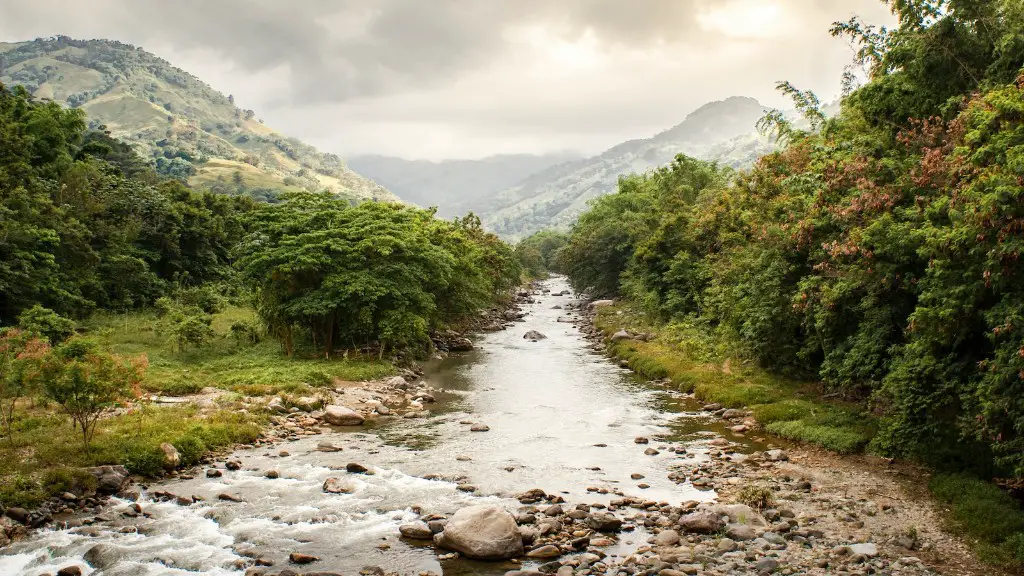History
The word Mississippi was derived from the Ojibwe language ‘misi-ziibi’ which translates to ‘great river’ or ‘gathering of waters’. It has been colonialized in various forms by the French, Spanish and English. During Spanish rule in the 16th and 17th centuries, the river was called Rio del Espiritu Santo. The name Mississippi is believed to have been applied to the river during French rule in the 18th century. It is written as “Messipi” in French. The popularized name, Mississippi, came from the French ruling influence at the time.
In 1811 and 1812, the Mississippi River became a major theater of the War of 1812. After the war, Congress granted states the right to construct dams, canals, and levees within the boundaries of their states, granting the states the economic control of the Mississippi River trade. The population rose along the Mississippi River, especially during the California Gold Rush of 1848.
Geography
The Mississippi River is the largest watershed in North America, stretching from the Appalachian Mountains in the east to the Rocky Mountains in the west with a total length of 2,348 miles. As of 2019, the river initiated in Lake Itasca in northern Minnesota, and passed through the states of Minnesota, Wisconsin, Iowa, Illinois, Missouri, Kentucky, Tennessee, Arkansas, Mississippi, and Louisiana until it empties into the Gulf of Mexico. The Mississippi River is also the fourth longest river in the world.
The Tennessee-Tombigbee Waterway project connected the Tombigbee River with the Tennessee River. The project was initiated by the United States Congress in 1972. Generally, the purpose of the project was to provide an outlet from the basin of the Mississippi River and the Gulf of Mexico. The main purpose of the project is the transportation of goods from the Mississippi River to the Gulf. This project helps the navigation along the Mississippi River and makes transportation easier and faster.
Industry
The Mississippi River is a major transportation artery for farmers and manufacturers, serving as a major sub-system of the U.S. intermodal transportation system. Thanks to this navigable reach, major shipping centers are found in St. Louis and Memphis, while major export terminals are in New Orleans, Vicksburg and Natchez. These ports export billions of dollars in products each year worldwide.
The waterway experienced a remarkable growth in navigation traffic in the 19th century, with an average of 1,400 vessels passing through each year. This increased with the opening of the Locks and Dams system, with over 3.6 million tons of cargo now moving through each year. This includes bulk goods, containers, and large amounts of coal and petroleum products.
Environmental Impact
The development of the Mississippi River has had great environmental impacts. In the late 20th century, many efforts were developed to improve the environmental status of the river. For example, the Wetlands Reserve Program (WRP) has been implemented since 1993 to restore wetlands and riparian habitats. The WRP funded the restoration of more than 6,200 hectares of wetlands and riparian habitats across the Mississippi River Basin.
Further, water quality monitoring programs have been developed to collect data on water quality, with the aim of improving river ecosystems. The majority of these programs are centered on monitoring aquatic vegetation, sedimentation, pollutants, and sedimentation. These programs help to inform decision-making and policy-making in the region, in order to improve the water quality and reduce the impacts of pollution.
Economy
The Mississippi River is an important source of revenue for the states that border it. It provides access to markets and valuable resources such as timber, minerals, and agricultural products. The Mississippi River and its tributaries are also crucial to a range of industries, including shipping, power generation, recreation, and tourism. In 2010, the recreational economic impact of fishing, boating, and nature tourism along the Mississippi River and its tributaries was estimated at $6.8 billion.
Economic activities in the area are directly dependent on the river. It provides energy for energy sector industries, is an essential transportation link for food, raw materials, and finished products, and a source of resources for fishing, hunting and tourism. The Mississippi River is one of the most economically important bodies of water in the world, responsible for generating billions of dollars in direct and indirect revenue annually.
Cultural Impact
The Mississippi River has shaped the culture of the United States in countless ways, from inspiring literature and music to influencing the development of the nation’s infrastructure. From legendary novelists like Mark Twain to legendary musicians like Johnny Cash, the Mississippi River has been a source of inspiration – a theme of boundless possibilities, of adventure, and of hope.
The Mississippi River has also been an important meeting place for cultures for centuries. Over the last 20 years, local organizations have worked to celebrate the cultural importance of the river. These efforts have brought together people from across the country to participate in activities like paddling trips, music festivals, and collaboration between communities living on its banks.
Natural Beauty
The Mississippi River is known for its immense natural beauty, particularly the Mississippi River Valley, one of the most picturesque areas for outdoor recreation in the United States. The valley is full of beautiful bluffs, oxbow lakes, and lush forests, providing a broad range of outdoor activities, such as fishing, hunting, and camping.
The valley provides prime habitat for migratory birds and other wildlife. Every spring and fall, millions of birds make the Mississippi River Valley their migration route. During these times, the river is full of birds, with some species stopping by for a brief layover, while others come to winter in the area.
The Mississippi River also seduces paddlers and boaters. The wild currents, solenoidal waves and unique landscape provide a unique high-adrenaline experience. There are hundreds of miles of waterways and oxbow lakes, providing an unforgettable paddling experience that ranges from meandering serenely through the falls to taking on the whitecaps and bravely tackling some the gnarlier rapids.



